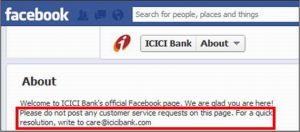We left no doubt here and here that we’re big fans of airlines, banks, insurers, telecom operators and other industries that provide customer service over social networks.
In the weeks following these two posts, we were introduced to a bunch of cloud-based tools that monitor tweets and other social media updates, identify customer complaints by analyzing their sentiment and automatically convert them to service requests on a company’s existing telephone and email based customer service system. For a quick roundup of such applications, check out 5 Tools to Turn Social Listening into Customer Service Action by Ashley Furness, CRM Analyst for Software Advice. The author’s pet peeve is that, only 38% of social media messages get a response from brands i.e. 62% go unanswered. 
In the past, social media monitoring tools have only been able to display item feeds, and have lacked the ability to reply to tweets and other updates from within themselves. As a result of this problem, which I call lack of “insitu engagement” and Furness terms “functionality gap”, brands could respond to social media messages only by bridging these tools to conventional systems that automate the end-to-end process of logging service requests, replying to them and escalating the tickets that need extra attention from the service provider’s company. By establishing this bridge, Furness expects companies to increase their response rate to social media messages from the current abysmal figure of 38%.
Our personal experience of trying to elicit answers on social media confirms this response rate, so we won’t quibble about it.
However, we contend that there’s no functionality gap any longer. Many social media sentiment analysis applications, including our HEATMAP360, do support insitu engagement. Service managers can not only see the sentiment of individual messages on the dashboard but can also reply to them on the same network on which they received the post. For example, if customer John Doe tweets a concern to a company, HEATMAP360 enables the company to reply back to John Doe on Twitter.

Having used Twitter in the first place, we suspect that John Doe would prefer to receive a reply by Twitter. With the current crop of social media sentiment analysis applications, it’s possible to use the social media dashboard itself to reply back to John Doe, which makes a lot of sense under this context. By doing so, companies might find that they’re able to resolve a complaint in a few minutes instead of going back and forth to obtain John Doe’s email address first, convert the social media message to a service request next, and then use the conventional customer service system to send out a reply by email.
Although social media monitoring / sentiment analysis platforms allow real time response to customer complaints, how come 62% of messages posted on social media never receive responses? Based on our work with a few banks, insurers and telecom companies, the low response rate is not because of the aforementioned “functionality gap”. We attribute it to the following factors:
- Many companies are not on social media, as in, they don’t have a Twitter, LinkedIn or Facebook account. They ignore social media without realizing that their customers may be raving or ranting about them on social networks. Naturally those posts will elicit no response from such companies.
- Many tweets are FYI and don’t call for a response e.g. kiranmanral: I smsed no one today. Only ICICI smsed me. Damn. Can’t even outrage on the 5 sms limit. #fml.
- Many tweets contain NSFW language e.g., beltranmegan: So much hate for vodafone. What if im dieing, ill fucking die a horrible death because i cant call for help because i jave no service. By replying to them, a respectable telecom company runs the risk of being seen as endorsing foul language.
As an aside, a leading bank that pioneered social media customer service in India – and perhaps the world – pulled out of this channel within three months. Not sure why, but we won’t be surprised if the second or third factor above played an active role in its decision. 
As the above examples of social media complaints show, it’s not easy even for human beings to convert a tweet into a structured service ticket.
It’s that much harder to do this via software.
Instead of trying to do the impossible and delaying the response, we advocate staying within social media.
If more information is required before you can provide a sensible reply, please encourage your customers to send multiple tweets or use a third-party tool like Twitlonger. But, don’t force them to use email – please appreciate that if email was your customer’s preferred medium of communication, they wouldn’t have used social media to reach out to you in the first place.
In many companies, once a customer complaint enters a conventional customer service system, it is subject to SLAs (Service Level Agreements) and TATs (Turn Around Times) with associated penalties. If an ambiguous social media message gets converted to a formal ticket on the customer service system, it would be virtually impossible for the service provider to meet its SLAs / TATs. It would face unwarranted penalties. It’s in its own interest to flesh out the complaint on social media completely and log it into the formal customer redressal system only after it’s ready for it.
Under the circumstances, it’s too early to bridge social media with conventional customer service systems. To paraphrase a certain famous saying about a certain infamous casino city in the US state of Nevada, “what happens in social media should stay in social media”.